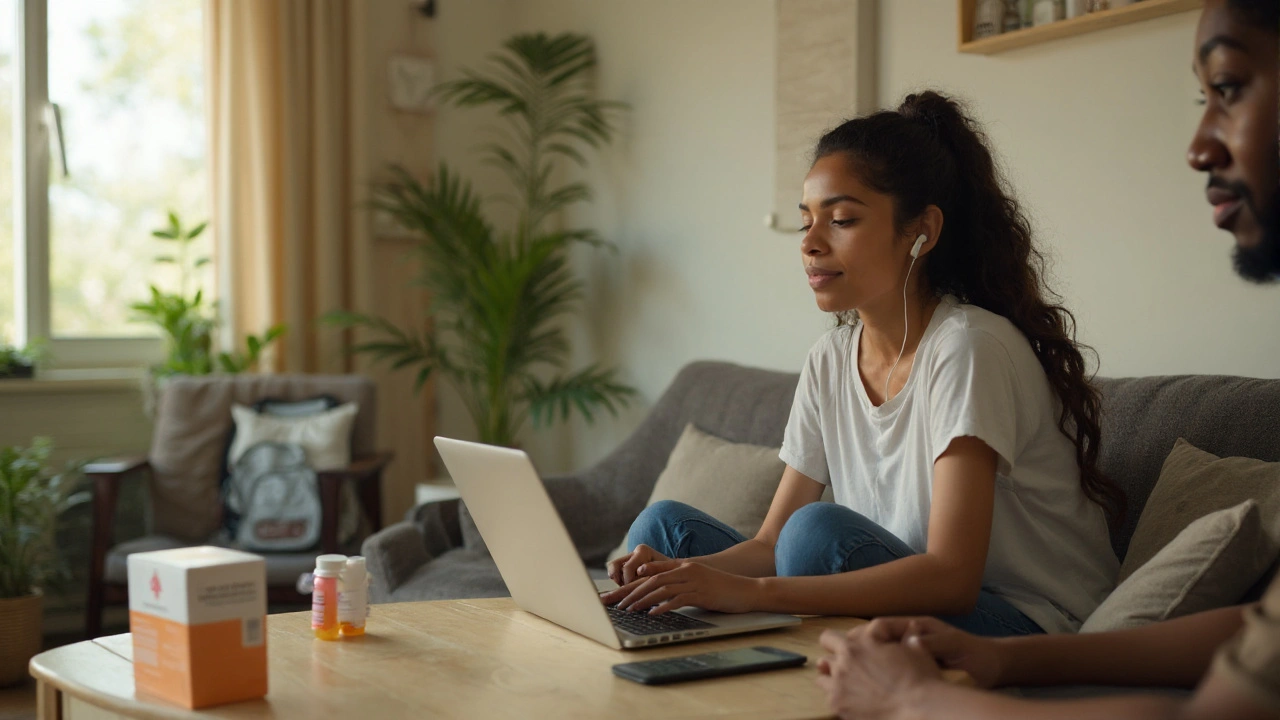Opioid Addiction Treatment Technology: What’s New and How It Helps
If you or someone you know is fighting opioid dependence, the right tech can make a huge difference. From phone apps that remind you to take meds, to wearables that track cravings, today’s tools aim to keep treatment simple, safe, and personal.
Digital Platforms That Keep You On Track
Mobile recovery apps are more than just calendars. They let you log doses, set up video check‑ins with a counselor, and even connect to peer groups for instant support. Most apps send push alerts when it’s time for a buprenorphine dose or a counseling session, cutting down missed appointments.
Many platforms also offer mood trackers that flag rising stress levels, so you can reach out before a relapse. The data stays encrypted, and you control who sees it—your doctor, therapist, or nobody at all.
Wearables and Remote Monitoring
Smart wristbands and patches now measure heart rate variability, sleep quality, and skin conductance—all signs that the body is reacting to cravings. When a pattern suggests an increased risk, the device can send a discreet alert to your phone or directly to a care team.
This real‑time feedback lets clinicians adjust medication doses without waiting for the next office visit. For patients, it means fewer surprise withdrawals and more confidence that their treatment adapts to daily life.
Another breakthrough is telemedicine. Video visits let you start or continue medication‑assisted treatment (MAT) from home, removing travel barriers and reducing stigma. Most states now allow initial buprenorphine prescriptions after a virtual assessment, making it easier to get help fast.
Telehealth platforms also integrate electronic prescribing tools that double‑check drug interactions and dosage limits. The system logs every prescription, giving doctors a clear view of what’s been taken over weeks or months.
For those who need more hands‑on support, remote dispensing machines are appearing in community centers. After a telehealth check‑in, you can retrieve your medication from an automated locker, cutting down wait times and ensuring secure delivery.
Virtual reality (VR) therapy is still emerging but shows promise. Immersive scenarios help patients practice coping skills in simulated high‑risk environments—like a bar or a party—without real‑world danger. Early studies suggest VR can lower cravings when paired with traditional counseling.
AI-driven dosing algorithms are also being tested. By feeding the system data from wearables, self‑reports, and lab results, the AI suggests optimal dose adjustments for each individual, aiming to keep withdrawal symptoms at bay while minimizing overdose risk.
The bottom line: technology isn’t a magic cure, but it removes many of the hurdles that keep people from staying in treatment. Simple tools like reminder apps, plus advanced options such as wearables and telehealth, give patients more control and clinicians better insight.
If you’re starting a new program, ask your provider about these options. Choose an app that fits your routine, consider a wearable if you want extra monitoring, and never skip a virtual check‑in—those short appointments can catch problems before they grow.
Remember, the best tech is the one you actually use every day. Pick what feels easiest, keep the data secure, and let it support the proven steps of medication‑assisted treatment, counseling, and community support.

- 11 Comments
What’s new in 2025: telehealth MOUD, long-acting meds, remote monitoring, naloxone OTC, and AI triage. Plain talk, real evidence, step-by-steps, risks, and what to do next.
